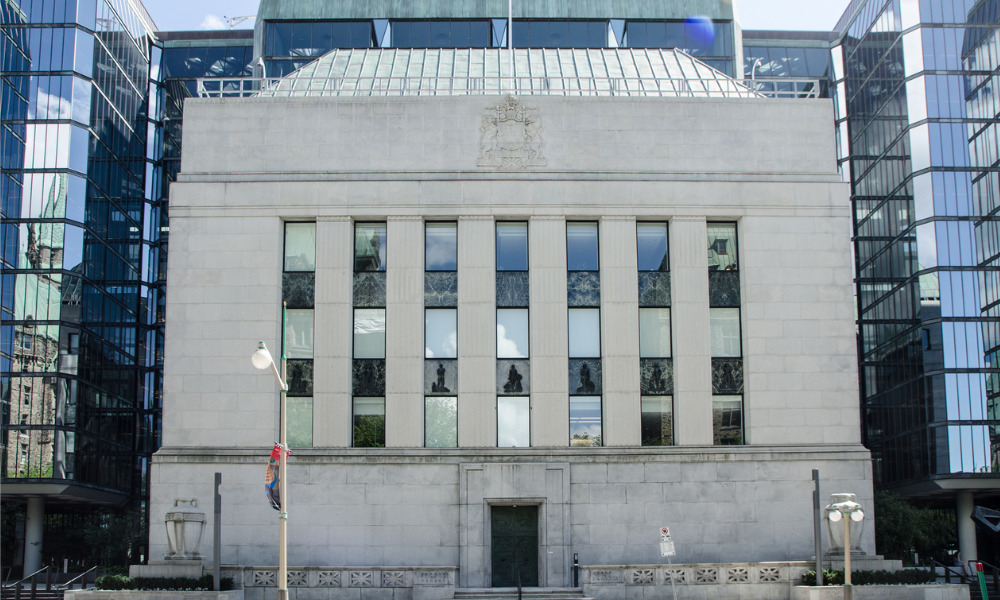Bond markets predicting interest rates to fall – and possibly very soon

In the aftermath of the Silicon Valley Bank failure and bailout, bond markets have undergone a significant reassessment of future rate moves by central banks, including that of the Bank of Canada. According to swaps-based implied probabilities, there are now decent odds (40%) of a quarter-point cut at the Bank of Canada's next meeting on April 12, with markets also pricing in at least 50 basis points of interest rate cuts by this summer.
Before news of the Silicon Valley Bank collapse emerged on Friday, money markets had been pricing in a quarter-point hike by mid-year, but after the news, they were priced for a strong likelihood that the Bank of Canada would be on hold for the rest of this year. However, this morning, the market's assessment of future Bank of Canada moves has shifted dramatically, with a big dive in bond yields, particularly in shorter-term issues.
The Canadian 2-year bond yield, for example, is down almost 40 basis points to 3.58%, largely tracking the move in 2-year U.S. Treasuries, which are set for their biggest one-day fall since 1987. Changes in central bank policy rates are especially felt on the shorter end of the bond yield curve and directly impact variable mortgage rates and other forms of credit.
As of the last check, the Canada 5-year bond yield, which has a significant influence on fixed mortgage rates, was down more than 30 basis points and retesting its lows for this year.
Refinitiv Eikon data is currently showing what credit markets are pricing in for the Bank of Canada's overnight rate as of 10:25 a.m. ET;
| Month | Implied Rate | Change in BP |
|---|---|---|
|
Apr |
4.423 |
-5.89 |
|
Jun |
4.246 |
-23.59 |
|
Jul |
3.9678 |
-51.41 |
|
Sep |
3.9444 |
-53.75 |
|
Oct |
3.9151 |
-56.69 |
|
Dec |
3.8187 |
-66.32 |
If the bond markets are correct, and rates do fall, this may provide a much needed lifeline to the property sector. Canada’s "Big Six" banks have become some of the country's biggest real estate bears, according to their quarterly regulatory filings.
The banks' forecasts, used for risk planning and capital allocation, reveal that just one of them has forecast home prices rising over the next year, despite seeing long-term value. Most don't see a quick recovery either, with some even expecting prices to remain lower five years later.
Financial institutions are required to produce risk scenarios to help allocate resources, including macro forecasts like GDP, unemployment, and oil prices. The forecasts are broken down into three areas - a base case, and two alternatives. RBC is the only Big Six bank expecting prices to rise in their base case scenario, forecasting a 2.6% increase to $732,300 by next year, followed by 5.1% compound annual growth for the next four years.
At the end of the five-year forecast, a home would be around $893,500, or 25.2% higher than current prices. RBC has separately said they believe that Canada is only halfway through the correction, meaning they see prices falling sharply before bouncing back.
It’s not clear whether a rate cut would be a temporary reprieve, or would allow real estate to have a softer landing than expected.



